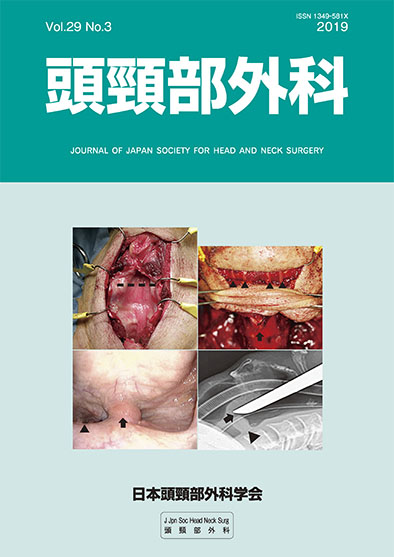Volume 29, Issue 3
Displaying 1-20 of 20 articles from this issue
- |<
- <
- 1
- >
- >|
-
2020Volume 29Issue 3 Pages 247-249
Published: 2020
Released on J-STAGE: March 31, 2020
Download PDF (507K)
-
2020Volume 29Issue 3 Pages 251-257
Published: 2020
Released on J-STAGE: March 31, 2020
Download PDF (571K) -
2020Volume 29Issue 3 Pages 259-265
Published: 2020
Released on J-STAGE: March 31, 2020
Download PDF (292K) -
2020Volume 29Issue 3 Pages 267-272
Published: 2020
Released on J-STAGE: March 31, 2020
Download PDF (466K) -
2020Volume 29Issue 3 Pages 273-278
Published: 2020
Released on J-STAGE: March 31, 2020
Download PDF (653K) -
2020Volume 29Issue 3 Pages 279-283
Published: 2020
Released on J-STAGE: March 31, 2020
Download PDF (461K) -
2020Volume 29Issue 3 Pages 285-289
Published: 2020
Released on J-STAGE: March 31, 2020
Download PDF (988K) -
2020Volume 29Issue 3 Pages 291-297
Published: 2020
Released on J-STAGE: March 31, 2020
Download PDF (418K)
-
2020Volume 29Issue 3 Pages 299-304
Published: 2020
Released on J-STAGE: March 31, 2020
Download PDF (1851K) -
2020Volume 29Issue 3 Pages 305-309
Published: 2020
Released on J-STAGE: March 31, 2020
Download PDF (1077K) -
2020Volume 29Issue 3 Pages 311-320
Published: 2020
Released on J-STAGE: March 31, 2020
Download PDF (1628K) -
2020Volume 29Issue 3 Pages 321-326
Published: 2020
Released on J-STAGE: March 31, 2020
Download PDF (666K) -
2020Volume 29Issue 3 Pages 327-331
Published: 2020
Released on J-STAGE: March 31, 2020
Download PDF (1121K) -
2020Volume 29Issue 3 Pages 333-336
Published: 2020
Released on J-STAGE: March 31, 2020
Download PDF (582K) -
2020Volume 29Issue 3 Pages 337-342
Published: 2020
Released on J-STAGE: March 31, 2020
Download PDF (1221K) -
2020Volume 29Issue 3 Pages 343-347
Published: 2020
Released on J-STAGE: March 31, 2020
Download PDF (1506K) -
2020Volume 29Issue 3 Pages 349-354
Published: 2020
Released on J-STAGE: March 31, 2020
Download PDF (1218K) -
2020Volume 29Issue 3 Pages 355-359
Published: 2020
Released on J-STAGE: March 31, 2020
Download PDF (975K) -
2020Volume 29Issue 3 Pages 361-365
Published: 2020
Released on J-STAGE: March 31, 2020
Download PDF (1261K)
-
2020Volume 29Issue 3 Pages 367-371
Published: 2020
Released on J-STAGE: March 31, 2020
Download PDF (1105K)
- |<
- <
- 1
- >
- >|
